The Australian stumpy tail cattle dog is a medium-sized, purebred herding dog of Australian origin. Australian stumpy tail cattle dogs are also commonly referred to as stumpy tails.
These dogs were bred to herd cattle and normally work alone, so they may be aggressive towards other household pets if not trained properly.
They aren’t well-suited for apartment living, as they need a lot of room to play and run around.
Australian stumpy tail cattle dogs typically cost $400 to $600 USD.
TABLE OF CONTENTS
What is an Australian Stumpy Tail Cattle Dog?
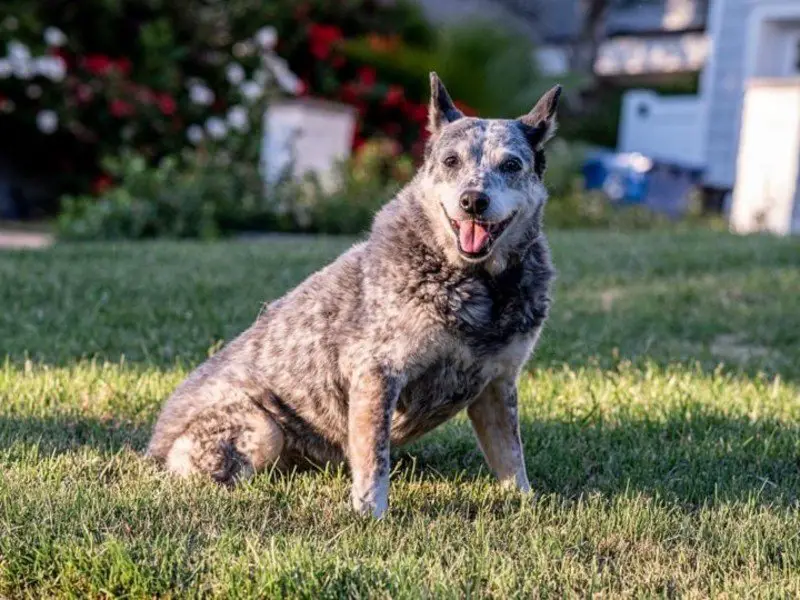
From Adobe Stock
Developed in Australia to herd cattle, the Australian Stumpy Tail Cattle Dog is descended from the Australian Dingo and European herding dogs. Nicknamed “Heeler” or “Stumpy” in Australia, it took several stages of breeding different dogs until the desired result was achieved: a dog that was tough enough to withstand working in an arid, nearly shadeless terrain, while managing cattle as well as any of the best European breeds.
The story of the Australian Stumpy Tail Cattle Dog actually began when the first boats bearing British settlers arrived on the continent. In 1788, the British government sent a fleet of ships carrying 736 convicts, 17 children, and several hundred soldiers and sailors and their families. Everyone aboard had the same assignment upon arrival – to set up a penal colony in preparation for the arrival of more convicts in the future. Before that first boatload of colonists arrived in Australia in 1788, there were no domesticated farm animals on the continent. The native Aborigines hunted kangaroos and other indigenous animals and ate wild plant life. There were no domesticated farm animals such as sheep and cattle.
The Australian Aborigines were hunter-gatherers that lived off flora and fauna like the kangaroos and other animals indigenous to Australia. The settlers established their colony near Botany Bay, and as the community grew many people began to raise cattle and sheep. Raising stock created the need for dogs. Smithfields were used for a while, but they barked too much and bit the cattle too hard. In addition, they couldn’t adapt to the hot, arid climate in Australia, which was so different than the climate in Europe.
One person who worked on producing a good working dog that met the European farmers’ needs was a man named John Timmins from New South Wales. He crossed Smithfield dogs with local Dingos, and created a dog known as “Timmins’ Biters”. The red dogs produced by the Smithfield and the Dingo were difficult to train because they still had predatory instincts. While it didn’t bark as often as the Smithfield, it had a tendency to bite, and thus earned its name. And while all herding dogs nip at the feet of the stock they are trying to move, they shouldn’t bite so hard they draw blood…
In 1825, a man named Thomas Simpson Hall crossed an English drover’s cur with a dingo (drovers move cattle over long distances in search of water or new grazing land). He lived in New South Wales, and his family-owned numerous properties spreading between Sydney and Queensland. He had thousands of cattle and dozens of drovers, and provided them all with the new breed of dog he called “Hall’s Heelers”. They earned their name because of the way they nipped at the heels of obstinate cattle to hurry them along. By 1932, Hall was satisfied with the dog he had created. A dog that was either blue or red and either had a cur’s bobtail, or a Dingo’s brushtail.
In 1840, Hall decided to try to improve his new cattle dog. He imported a pair of blue smooth Highland Collies. He continued to breed them with Dingos and Hall’s heelers and produced a new stock of blue and red puppies. In 1845, the Stumpy Tail Cattle Dog was recognized by the Royal Agricultural Society Kennel Council (RASKC). At the time of Hall’s death in 1870, Hall’s Heelers were dispersed all over New South Wales and Queensland. The Heeler was the ancestor of the Australian Stumpy Tail Cattle Dog and came before the Australian Cattle Dog or the Australian Kelpie.
The new dog became extremely popular in Australia among cattlemen, but some had tails and others didn’t. More serious breeders started to separate the two types of the dog, mixing them with the Blue Merle Collie (known today as the German Coolie). Two distinct breeds evolved: the Australian Cattle Dog and the Australian Stumpy Tail Cattle Dog.
In the 1890s, both dogs were exhibited in Australian shows. In 1917 approximately half of the dogs entered in shows were Australian Stumpy Tail Cattle Dogs. But World War Two put a stop to dog breeding in many places in the world, and Australia was no exception. The numbers of Australian Stumpy Tail Cattle Dogs began to decline, and in 1960 there was only one registered breeder left on the continent.
In the past, the Australian Stumpy Tail Cattle Dog had been referred to as the Stumpy, the Smithfield, or the Smithfield Heeler. In 1963, the ANKC gave it the official name of Stumpy Tail Cattle Dog, and in 2001, it was finalized as the Australian Stumpy Tail Cattle Dog. There is not enough documentation to help dog clubs determine whether Tom Hall’s dogs or John Timmin’s dogs are the ones that continued to be bred to produce the Australian Stumpy Tail Cattle Dogs. It may have been descendants of both of their dogs, or perhaps it was both and included a few more herding dogs mixed in. In any case, the basic “template” for the final product was well established.
Just as it took time for the breed to be perfected, and it took time to decide upon a permanent name, it also took time for breeding standards to be set with regard to the Australian Stumpy Tail Cattle Dog and the Australian Cattle Dog. For a long time, a breeder might produce a litter with both types of puppies. Some would be registered as Australian Stumpy Tail Cattle Dogs, and some as Australian Cattle Dogs, depending on which physical characteristics they were born with. A major deciding factor was of course the absence or presence of a tail.
But in the late 1960s, this practice was stopped, and the Australian Stumpy Tail Cattle Dog was left out of the formula. By the 1980s, the Australian Stumpy Tail Cattle Dog was almost extinct. There was only one breeder left in all of Australia who was devoted to producing more Australian Stumpy Tail Cattle Dogs – Mrs. Iris Heale of Glen Iris Kennels.
In 1988, The Australian National Kennel Council (ANKC) decided to register the Australian Stumpy Tail Cattle Dog as people began to realize what a versatile working dog it actually was, and its numbers once again were on the rise. A grading system was set up to classify dogs identified by breeders as Australian Stumpy Tail Cattle Dogs. The purpose of the system was to encourage breeders to adhere to a standard and perfect the quality of future litters. The ANKC stated: “The Australian National Kennel Council decided to introduce an ongoing program to ensure the preservation of the Stumpy-Tail Cattle Dog, the rarest of our recognized Australian breeds.”
A panel of three judges examined each dog that was brought before them, and gave it one of three classifications:
- “Fully Registered,” meaning both of the dog’s parents are registered.
- “A Grade,” meaning the dog conforms to breed standards, but only one of its parents is registered.
- “B Grade”, meaning the dog does not fully conform to the breed standards, but still has many traits that define them as Australian Stumpy Tail Cattle Dogs, and differentiate them from Australian Cattle Dogs.
In 2007, this classification system was discontinued, and no more dogs are registered as Australian Stumpy Tail Cattle Dogs unless both their parents are purebred.
The Fédération Cynologique Internationale classifies the Australian Stumpy Tail Cattle Dog as a cattle dog. In Australia, the breed is classified as a working dog by the Australian National Kennel Council Ltd. The New Zealand Kennel Club also classifies it as a working dog, while the Canadian Kennel Club defines it as a herding breed.
Even though both Australian Cattle Dogs and Australian Stumpy Tail Cattle Dogs were brought to North American after World War II, the American Kennel Club and the United Kennel Club still don’t recognize the Australian Stumpy Tail Cattle Dog as a breed. In May 2018, the breed was added to the Australian Kennel Club’s Foundation Stock Service.
Appearance
The Australian Stumpy Tail Cattle Dog is a medium-sized, muscular, well proportioned, rugged-looking dog. Its neck is thick, its forelegs and hindquarters are strong and well developed. This breed carries almost no fat and can endure long hours of work. This dog has pointy, wide-set ears, and oval, alert looking eyes. Its head is wedge-shaped, and its body square. The length of an Australian Stumpy Tail Cattle Dog from breast bone to buttocks is equal to the height of its withers.
Australian Stumpy Tail Cattle Dogs have short, low-maintenance coats, extra fur forming a small ruff around the neck. They are born without tails, or in some cases have a tail no longer than 4 inches (10 cm).
Australian Stumpy Tail Cattle Dog Weight and Size
Australian Stumpy Tail Cattle Dogs are medium-sized dogs. The males stand at a height of 18 – 20 inches (45 – 50 cm), and the females at 17 – 19 inches (43 – 48 cm). The males weigh 38 – 45 pounds (17 – 20 kg), and the females are slightly lighter at 32 – 35 pounds (14 – 16 kg). A healthy Australian Stumpy Tail Cattle Dog lives between 12 and 15 years.
Common Colors
When Australian Stumpy Tail Cattle Dogs are born they are completely white, with just a little color on their ears. By age three weeks their coats begin to change color, and by three months their permanent adult coloring is quite visible.
This breed comes in two distinctive colors: blue and red. Blue dogs may have black markings, and red dogs can have darker red markings on their heads only. But neither should have any patches of tan or white.
Coat
If you are looking for a dog with a soft, luxurious coat, the Australian Stumpy Tail Cattle Dog is not for you. This is a breed with short, straight, dense fur, with a medium harsh texture. The longest the coat gets is 1-1½ inches, with the hair on the legs, feet, and head being the shortest. Around the Australian Stumpy Tail Cattle Dog’s there is a bit of a ruff of longer hair, and if you can get your fingers close to your pet’s skin, you will feel a softer undercoat.
Personality and Temperament
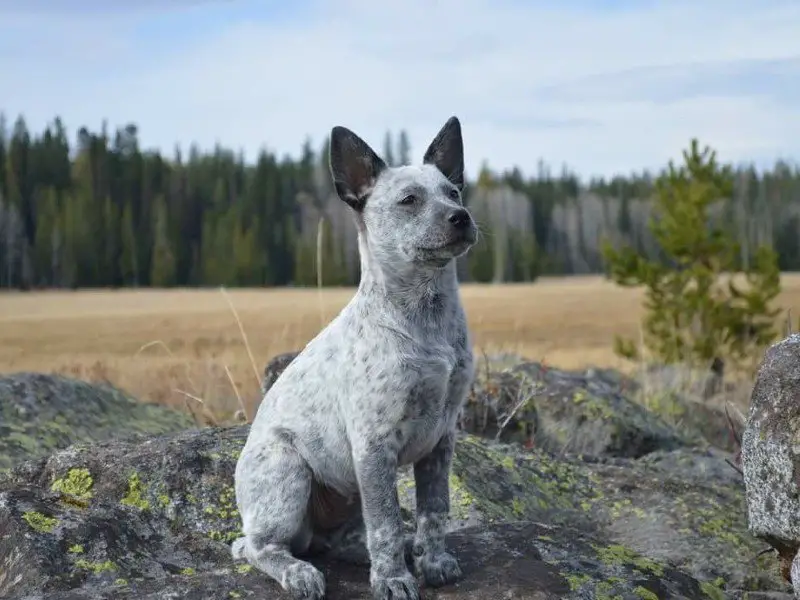
From Adobe Stock
Despite the fact that the Australian Stumpy Tail Cattle Dog is quite rare, and that few people in the world have ever heard about or seen this breed, it has all the qualities anyone looking for a working dog could possibly dream of. It is intelligent, obedient, alert, energetic, courageous, and devoted.
While it was originally bred to work with cattle, over the years it has been adapted into a watchful companion for humans – quick to distinguish between friend and foe. Sometimes nicknamed “Velcro dogs” because they stick so close to their owners, Australian Stumpy Tail Cattle Dogs need consistent socialization with people and animals outside of the family to teach them good manners. This isn’t a golden retriever that seeks attention from anyone and everyone, but a discerning dog that takes its role as protector of its family “herd” very seriously.
Behavior around other dogs
The Australian Stumpy Tail Cattle Dog can be aggressive towards other animals, including other pets in its home. Because of its herding instinct, this breed is used to working alone and will try to herd the other dog in your household before playing with it.
If you socialized your Australian Stumpy Tail Cattle Dog early and often, it will be possible to teach him to be tolerant of other dogs and behave well around them. If you are introducing a new pet into the family after your Australian Stumpy Tail Cattle Dog has already established your home as his own, keep the two animals separated by a wire fence for a few weeks so they can see and smell each other. Once you see that they feel comfortable near each other, you can begin to let them live and interact with your family together.
Is an Australian Stumpy Tail Cattle Dog a Good Family Dog?
Bred to herd cattle outside for most of the day, the Australian Stumpy Tail Cattle Dog also does well living in a family he feels responsible for. But if you don’t make sure your pet knows that one of the adults in the family is boss, he can start “herding” the children – and that includes nipping at the ankles to get them moving! On the other hand, Australian Stumpy Tail Cattle Dogs are also very protective of their family members, and that is a good trait.
This is not a breed that needs or even likes too much cuddling. Australian Stumpy Tail Cattle Dogs prefer attention involving intensive activity and a task. Children can play fetch with their pet, offering lots of praise every time a ball is retrieved and brought to their feet. The adults in the family can devise more complex tasks and games.
The Australian Stumpy Tail Cattle Dog will not be happy living in an apartment. This is a breed that needs wide-open space for exploring and releasing energy. Don’t get an Australian Stumpy Tail Cattle Dog if you don’t have a large yard, and if you own a farm or a big tract of land, even better.
How to Train an Australian Stumpy Tail Cattle Dog
Australian Stumpy Tail Cattle Dogs are smart and assertive, and if they sense any weakness in their owners they will quickly assume the position of “alpha” in your family “pack.” On the other hand, this breed is very eager to please, and if you consistently praise and reward your Australian Stumpy Tail Cattle Dog he will make every effort to live up to your expectations of him and obey your commands. Teach him one command at a time, and never shout or reprimand him too harshly – it will make him timid and he won’t want to learn anything new anymore.
Flyball, tracking, obedience events, herding events, and dog agility events are all activities your Australian Stumpy Tail Cattle Dog will enjoy and learn to excel in. But no matter what you decide to teach your Australian Stumpy Tail Cattle Dog, keep in mind that this dog does best with just one person training it. If too many family members are involved in the training, your pet may feel disoriented and stop obeying all of you.
Whenever possible, take your Australian Stumpy Tail Cattle Dog to different places for dog training sessions. He needs to learn that the commands he masters must be obeyed the same way no matter where he is when he hears them.
How to Care for an Australian Stumpy Tail Cattle Dog
Exercise Requirements
Bred to herd and manage livestock for hours every day outside, the Australian Stumpy Tail Cattle Dog has an extremely high energy level. Being an intelligent breed, it needs activities that stimulate its mind as well as its body. Long walks every day are not an option, but a mandatory duty. If you don’t give your Australian Stumpy Tail Cattle Dog the exercise he needs, he will become very bored and destructive. These dogs have been known to dig holes in flower gardens, yank laundry off lines, chew on furniture, and tear up cushions and comforters. This is definitely a breed you do NOT want to leave at home alone for too long.
Grooming and Shedding
The Australian Stumpy Tail Cattle Dog is a very low maintenance pet. You should brush your pet once a week with a firm bristle brush just to remove loose hairs and dirt. There is no need to trim its tail or whiskers, as this is a breed that goes for the “natural look”. Trim your dog’s nails and bathe him only as necessary. Australian Stumpy Tail Cattle Dogs absolutely love the water, so if he gets dirty he won’t mind being bathed – or you can simply take him for a swim in a local river or lake to clean himself off.
What to Feed an Australian Stumpy Tail Cattle Dog
Australian Stumpy Tail Cattle Dogs puppies, between the ages of two and three months, need to eat four meals a day. From age three to six months, you can reduce the amount of food your puppy eats down to three meals a day. For the second six months of his life, your Australian Stumpy Tail Cattle Dog can manage with only two meals a day, and from age one he only needs to eat once a day.
Some Australian Stumpy Tail Cattle Dogs do well with having their food bowls always available, and always full, allowing them to eat whenever they are hungry. This is a good method for very active dogs, or dogs that exercise excessively on some days, and less on others. But if you notice your Australian Stumpy Tail Cattle Dog is starting to gain too much weight, you will have to go back to feeding him just one bowl of food in each 24-hour period.
Premium dry dog food is the best source of vitamins, minerals, protein, and calories for your Australian Stumpy Tail Cattle Dog. You can feed him “people food” that is permitted for dogs, but it should not be more than 10% of his total daily nutritional needs. Cottage cheese, cooked eggs, meat, and chicken are good treats for your pet. Never feed puppies calcium-rich food intended for humans, because they get all they need in their dry puppy food, and too much calcium can cause orthopedic problems.
Known Health Problems
Due to its Dingo DNA, the Australian Stumpy Tail Cattle Dog is a generally robust, healthy breed. It is, however, prone to develop Progressive Retinal Atrophy. This debilitating eye condition can only be detected by examining the dog’s eye. There is no genetic test that can predict the chances of it affecting any particular puppy. In addition, some Australian Stumpy Tail Cattle Dogs carry a gene that causes deafness. A BAER (Brainstem Auditory Evoked Response) test lets you know how well a puppy can hear.
Elbow and hip dysplasia are extremely rare among Australian Stumpy Tail Cattle Dogs, but it is still a good idea to test for it. You don’t want to be that one pet owner who has to treat his dog for joint pain several years after bringing him home as a seemingly healthy puppy.
Australian Stumpy Tail Cattle Dogs can live to a ripe old dog age of 15 if they are well cared for emotionally and physically.
Buyer’s Guide
How to Choose an Australian Stumpy Tail Cattle Dog Puppy
Outside of Australia, it is nearly impossible to find anyone breeding or selling Australian Stumpy Tail Cattle Dog puppies. Australia is a very large country, and breeders are located everywhere from New South Wales in the south, to Darwin, at the northernmost point of the continent. The only way to know that you will be purchasing a healthy, well-adjusted puppy from any of these breeders is to make direct contact with them to ask questions, develop an email or FaceTime relationship, and ask for references.
Look for a breeder that can provide you with documentation about a litter’s parents, and proof of health clearances, such as results of Optigen prcd-PRA testing, hip evaluations, and BAER testing for deafness. It is also a good idea to buy a puppy from one who raises Australian Stumpy Tail Cattle Dogs as his personal family pets or to work on his farm. If a litter’s parents are used to living with a family, the puppies will find it easier to adapt to a new home and socialize well with children and other pets.
How Much Do Australian Stumpy Tail Cattle Dogs Cost?
Due to its rarity and the low demand for this unique dog, there is no dog club or kennel club in the US with registered breeders of Australian Stumpy Tail Cattle Dogs. If you really want this breed for your pet, you will probably have to travel to Australia to buy one or have one shipped to wherever you live. While the price tag for an Australian Stumpy Tail Cattle Dog is not high – between $400 and $600 dollars. But keep in mind that your travel expenses or the cost of having your new pet delivered to your door will significantly increase the total price of purchasing a puppy from this breed.
Quick Breed Summary Table
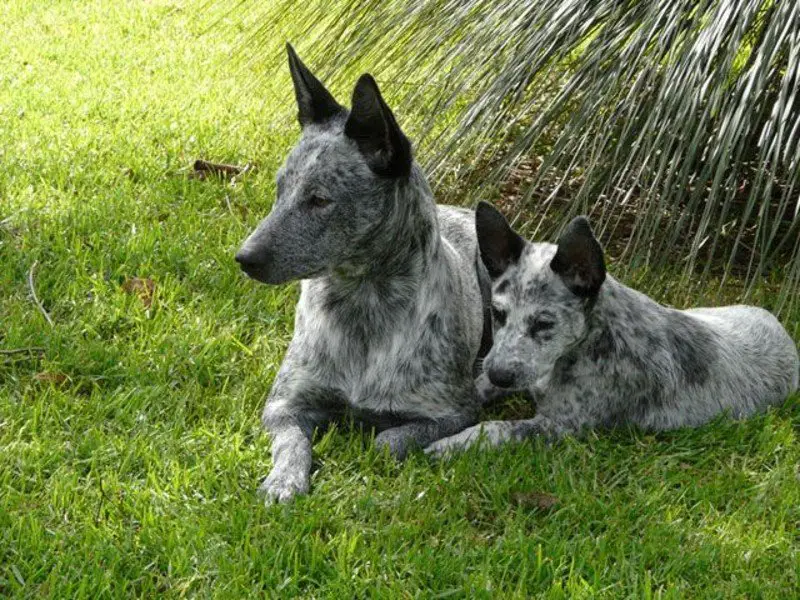
From Adobe Stock
The Australian Stumpy Tail Cattle Dog resembles no other dog in the world except for one – the Australian Cattle Dog. Both of these breeds are descended from Australia’s Dingo, and thus share unique genes. There are many similarities between these two breeds, there are also some very distinct differences. If you decided to acquire an Australian Stumpy Tail Cattle Dog, it is important to know the differences between the two dogs, in case someone asks. And anyone who sees you with this interesting looking dog is surely going to ask you something!
| Australian Stumpy Tail Cattle Dog | Australian Cattle Dog | |
| Region of popularity in Australia | most popular in New Wales and Queensland | most popular in Sydney |
| Origin | Australia | Australia |
| Job | herding and controlling cattle | herding and controlling cattle |
| Exercise needs | extremely high | extremely high |
| Coat | The outer coat is fairly short, is dense and straight, and has a medium-harsh texture. | The outer coat is longer and thicker around the neck and behind the legs and on the breeching. with the hairs everywhere on the body measuring between 2.5 to 4 cm ( 1-1.5 ins) in length. |
| Coloring |
|
|
| Head | more square shape, shorter back, longer legs, lighter body, more wedge-shaped head | more rectangular shape, longer back, shorter legs, heavier body, rounded head between the ears |
| Ears | pointy ears, set very high on the head | set lower on the head, and far apart |
| Eyes | almond-shaped eyes | oval-shaped eyes |
| Tail | born without a tail | born with a tail |
Summary
The Australian Stumpy Cattle Dog’s name aptly describes its origin, appearance, and purpose. Since no other dogs in the world have been crossbred with Australia’s native Dingo, except for the Australian Kelpie and the Australian Cattle Dog, this is a unique breed with strong genes going back thousands of years. It is believed that there has never been any other case in the world where a wild dog has been bred with a domestic dog to achieve a functional, working breed.
For the last 200 years, serious breeders have worked to perfect and protect the continued existence of Australian Stumpy Cattle Dogs. This breed, which is smart, loving, and loyal deserves a place of honor among other herding dogs around the world. Australian cattlemen will say it is the best herding dog on Earth.
Whether you own a cattle or sheep ranch, or you just want an active dog to accompany you are long hikes, an Australian Stumpy Cattle Dog will adapt to your needs and loyally perform whatever tasks you teach it.
It may be difficult to acquire an Australian Stumpy Cattle Dog as a pet, but if you are successful, know that you are not only gaining a friend but are also contributing to the effort to keep this breed from going extinct.

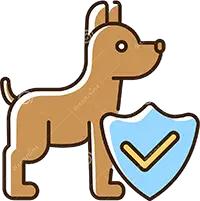
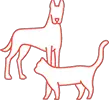
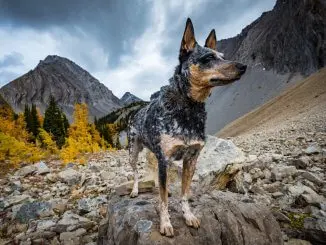
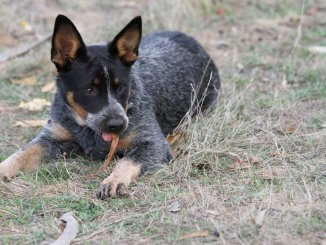
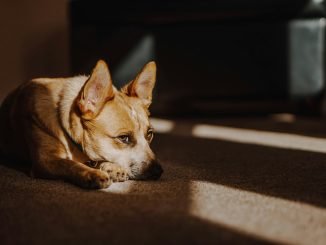
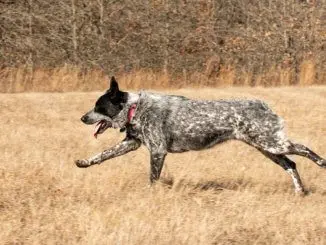
The photos with this article depict an Australian shepherd dog, not a stumpy tail cattle dog. You might want to update this.
Hi Nicholas, thanks for pointing that out. Photos are now updated accordingly.
Kelpies were never crossbred with dingoes, it’s just an old myth.
That’s our Lucy! RIP sweet girl. She was a rescue and lived a long time.